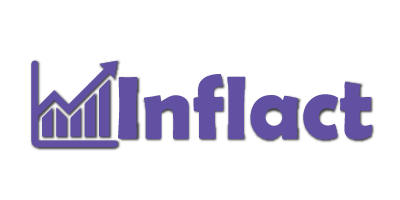Building an effective leadership and development program feels like trying to solve a puzzle with half the pieces missing. You know your organization needs strong leaders, but where do you start? How do you create something that goes beyond generic workshops and actually transforms how people lead?
The truth is, most leadership programs fail because they’re built on outdated assumptions about how people learn and grow. They focus on theory instead of practice, one-size-fits-all solutions instead of personalized development, and short-term training instead of long-term growth.
But here’s the good news: when done right, a well-designed leadership and development program can be the difference between a thriving organization and one that struggles to retain talent. Let’s explore how to build one that actually delivers results.
Understanding What Modern Leaders Actually Need
Gone are the days when leadership meant simply giving orders from the top of a hierarchy. Today’s leaders need to navigate remote teams, generational differences, rapid technological change, and shifting employee expectations about work-life balance.
Modern leadership development needs to address these realities. Your program should focus on skills like emotional intelligence, adaptability, inclusive leadership, and digital communication. It’s not enough to teach someone how to run a meeting—they need to know how to inspire a diverse team across different time zones while managing their own stress levels.
The most effective programs recognize that leadership isn’t a destination but a continuous journey. People don’t become great leaders after completing a two-day workshop. They develop through ongoing practice, feedback, and reflection.
Key Components of an Effective Leadership Development Program
Start with Self-Awareness
Before anyone can lead others effectively, they need to understand themselves. This means incorporating assessments and reflection exercises that help participants identify their strengths, blind spots, communication styles, and values.
Self-awareness activities might include:
- Personality assessments and discussion of results
- 360-degree feedback from colleagues, direct reports, and supervisors
- Values clarification exercises
- Reflection journals or regular check-ins
Focus on Real-World Application
The best learning happens when people can immediately apply what they’ve learned. Instead of lengthy classroom sessions, design your program around real workplace challenges.
Consider incorporating:
- Action learning projects where participants work on actual business problems
- Mentoring relationships with experienced leaders
- Job shadowing or rotation opportunities
- Cross-functional team assignments
Build in Ongoing Support and Accountability
Learning doesn’t stop when a workshop ends. Effective programs include ongoing support mechanisms that help participants continue developing over time.
This might include monthly coaching sessions, peer learning circles, or regular progress check-ins. The key is creating accountability without making it feel punitive.
Address Different Learning Styles and Preferences
Some people learn best through reading and reflection. Others need hands-on experience. Still others thrive in group discussions. Your program should accommodate these different preferences through varied delivery methods.
Mix traditional elements like workshops and reading assignments with modern approaches like microlearning modules, peer mentoring, and experiential learning opportunities.
Measuring Success Beyond the Smile Sheets
Here’s where many organizations get it wrong: they measure program success based on how participants felt about the training rather than whether it changed their behavior or improved business outcomes.
Effective measurement starts before your program even begins. Establish baseline metrics for things like employee engagement scores, retention rates, promotion rates, and 360-degree feedback scores for participants.
Then track these metrics over time. Look for improvements not just immediately after the program, but six months and a year later. Real behavior change takes time to show up in measurable results.
Consider tracking both hard metrics (performance ratings, team productivity) and soft metrics (confidence levels, leadership readiness, peer feedback). Both matter for long-term success.
Common Pitfalls to Avoid
Even well-intentioned programs can go astray. Watch out for these common mistakes:
Making it too generic. Leadership challenges vary significantly across different roles, industries, and organizational levels. A program designed for everyone often helps no one.
Focusing only on high-potential employees. While it makes sense to invest in your future leaders, don’t forget that leadership happens at every level. Frontline supervisors often have the most direct impact on employee experience.
Treating it as a one-time event. Leadership development is an ongoing process, not a destination. Programs that treat it as a checkbox to tick rather than a continuous journey rarely create lasting change.
Ignoring organizational culture. Your leadership and development program needs to align with your company’s values and culture. A program that works beautifully at one organization might flop at another if it doesn’t fit the cultural context.
Getting Leadership Buy-In and Support
No program succeeds without strong support from senior leadership. Leaders need to do more than just approve the budget—they need to actively participate and model the behaviors the program promotes.
When senior leaders share their own development experiences, participate in program activities, and publicly support participants, it sends a powerful message about the organization’s commitment to leadership development.
Make sure your executives understand that their visible support directly impacts program effectiveness. When participants see their CEO taking time to mentor program graduates or sharing lessons from their own leadership journey, it reinforces that development is valued and worthwhile.
Making It Sustainable for the Long Term
The most successful leadership and development programs become embedded in the organization’s DNA rather than existing as separate initiatives. This happens when leadership development becomes part of how the organization thinks about talent management, succession planning, and career development.
Consider how your program connects to other HR processes like performance reviews, promotion decisions, and succession planning. When leadership development is integrated into these systems, it becomes sustainable rather than dependent on individual champions or annual budget approvals.
Building an effective leadership development program requires patience, commitment, and willingness to iterate based on what you learn. But when you get it right, you create something that doesn’t just develop individual leaders—you build organizational capability that drives long-term success.




